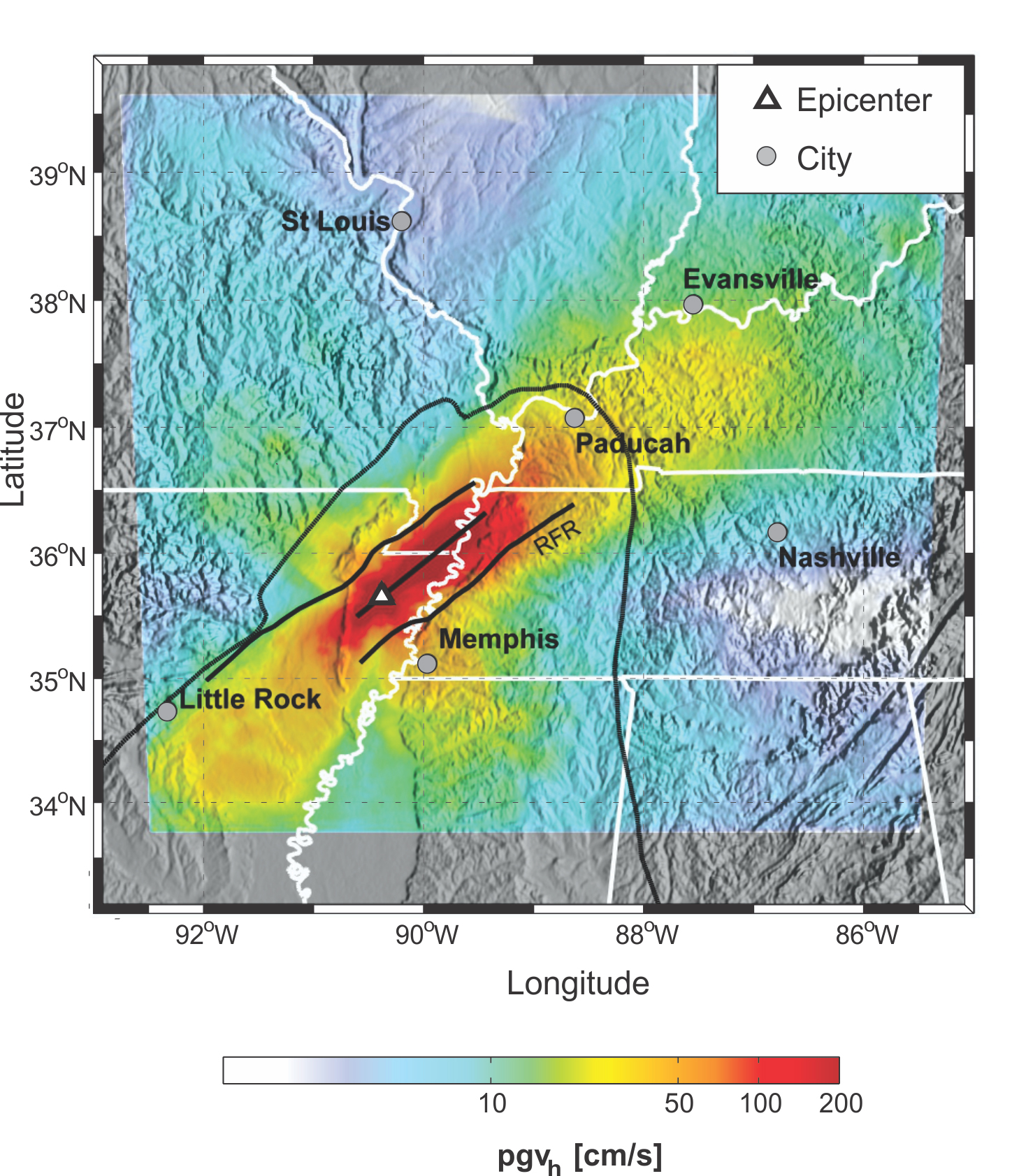UNDATED (USGS) - Computer simulations of earthquake shaking, replicating the quakes that occurred in 1811-1812 in the New Madrid seismic zone (NMSZ), indicate that future large earthquakes there would produce major, prolonged ground shaking. The 1811-1812 events were some of the largest in the United States since its settlement by Europeans, and the NMSZ spans portions of seven states: Illinois, Indiana, Missouri, Arkansas, Kentucky, Tennessee and Mississippi.
Scientists from the Universidad Nacional Autónoma de México, the U.S. Geological Survey, San Diego State University, AECOM (formerly URS Corporation), and the University of Memphis simulated a set of 20 hypothetical, yet plausible earthquakes located along two currently active faults in the NMSZ. The hypothetical earthquake scenarios range in magnitude from 7.0 to 7.7, and consider various possible epicenters.
"Based on our simulations, were the 1811-1812 earthquakes to repeat today, more than 8 million people living and working near the New Madrid seismic zone would experience potentially damaging ground shaking at modified Mercalli intensities ranging from VI to VIII," said Leonardo Ramirez-Guzman, lead author of the paper that appears in the July 30 edition of the Bulletin of the Seismological Society of America.
"Strong ground shaking in the greater Memphis metropolitan area could last from 30 seconds to more than 60 seconds, depending on the magnitude and epicenter of a potential seismic event," said Ramirez-Guzman, a professor at Universidad Nacional Autónoma de México and former USGS contract scientist.
The simulations also demonstrate the importance of fault rupture directivity(seismic energy focused along the direction of faulting), especially when combined with the wave channeling effects of the Reelfoot rift, a buried, northeast-southwest trending geologic valley in the NMSZ. In particular, future large earthquakes on the approximately 80-mile long NMSZ fault show strong shaking at vibration frequencies that pose a risk for mid-rise to high-rise buildings and tall bridges. This fault is thought to be responsible for the December 16, 1811 magnitude 7-7.7 earthquake. Some of the earthquake simulations showed strong shaking focused to the northeast as far as 100-200 miles away near Paducah, Kentucky and Evansville, Indiana, and to the southwest 150 miles toward Little Rock, Arkansas. An example of this earthquake shaking focusing effect can be seen here.
While it's not possible to know which direction a fault will rupture once an earthquake starts, knowing that there is an increased chance of strong shaking along these geologically-defined corridors is a valuable aid in better characterizing seismic hazard and minimizing earthquake risk.
Earthquakes pose a significant risk to nearly 150 million Americans. The USGS and its partners in the multi-agency National Earthquake Hazard Reduction Programare working to improve earthquake monitoring and reporting capabilities via the USGS Advanced National Seismic System (ANSS). More information about ANSS can be found on the ANSS website.
(Source: USGS)


